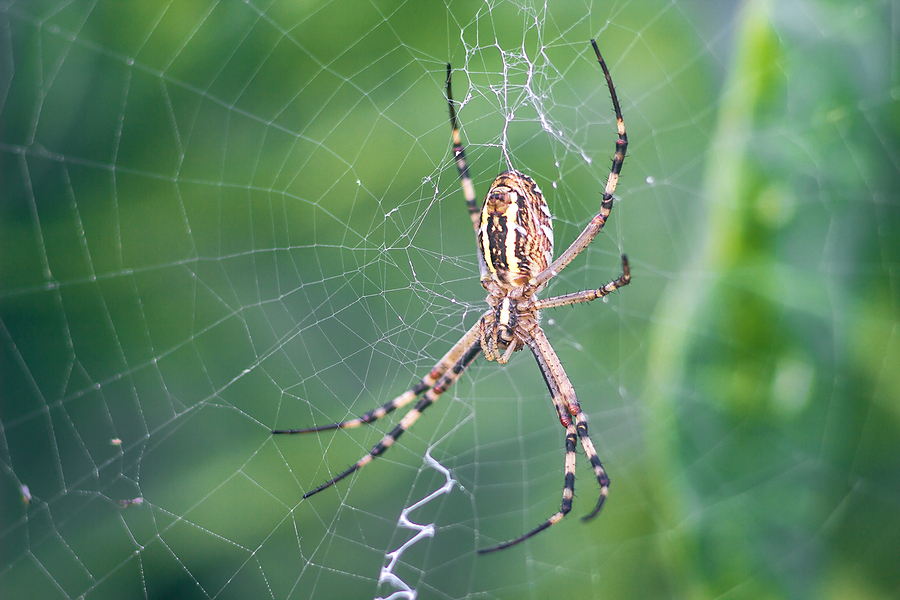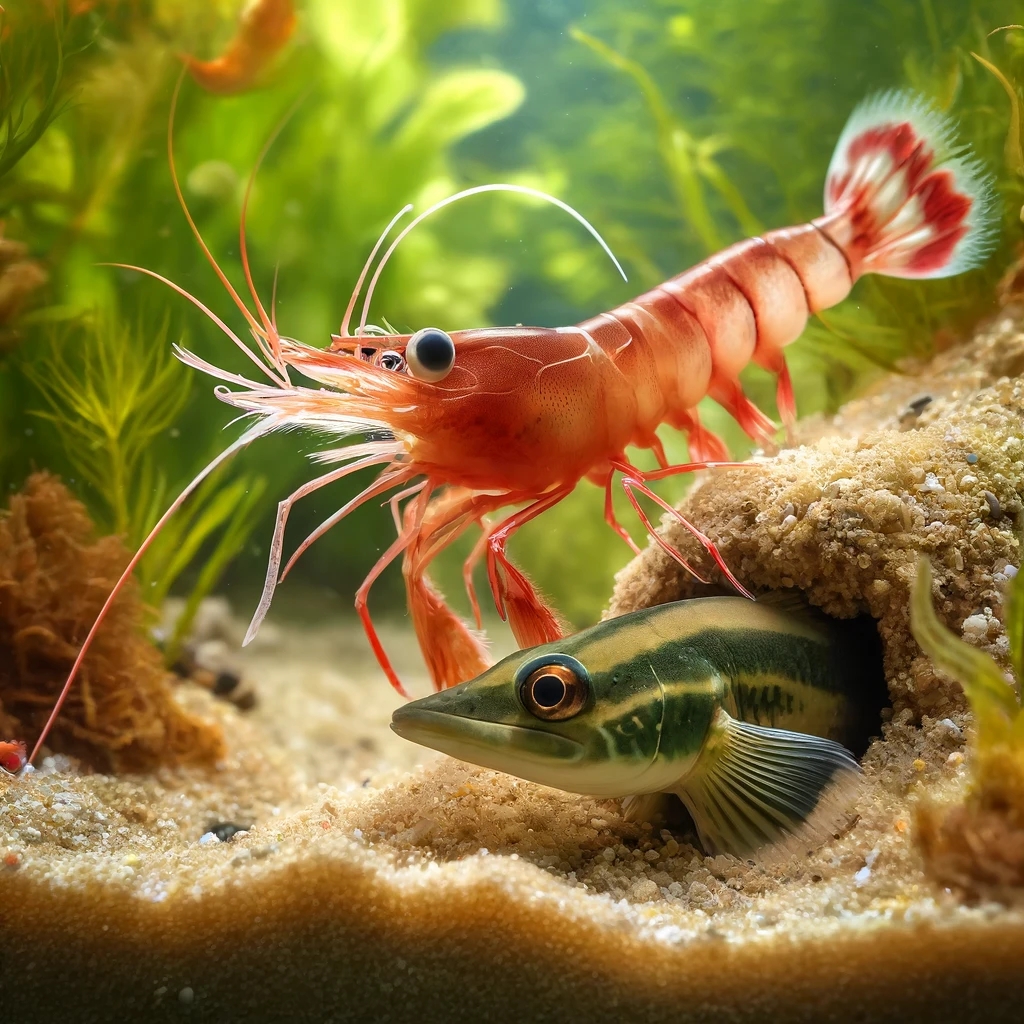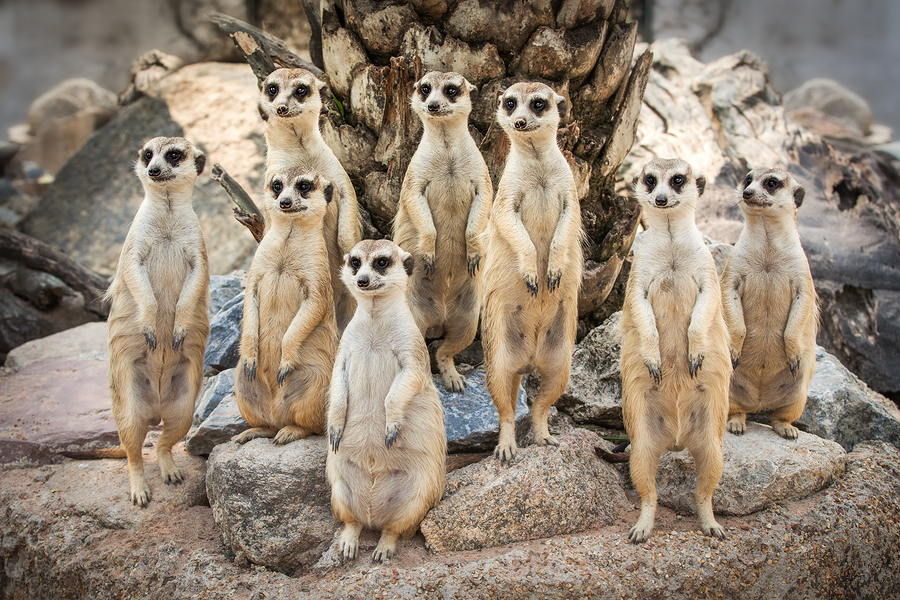Any child can tell you that the whole point for a spider to weave a web is so it can catch its supper. When all grownup, the child (now adult) will go one step further and describe the spider’s web as a highly efficient method for eating dinner. After all, there’s no chasing prey – just quiet perching waiting for dinner to be delivered. To be sure, efficiency is a definite output in this scenario of the nature-to-workplace equation, but it’s not the only learning to take-away.
SPIDER NOTES
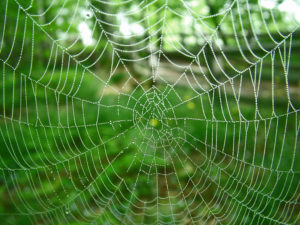 Let’s go back to the spider’s web for a moment. What most people don’t realize is that constructing the web itself consumes a terrific amount of energy by the spider. There’s a large amount of protein (silk) required to design a spider’s trap which, after a time, will lose its stickiness making it an ineffective hunting ground. To help recoup some of the vigor used in spinning, it’s actually common for spiders to eat their own web daily – making them impressive energy recyclers.
Let’s go back to the spider’s web for a moment. What most people don’t realize is that constructing the web itself consumes a terrific amount of energy by the spider. There’s a large amount of protein (silk) required to design a spider’s trap which, after a time, will lose its stickiness making it an ineffective hunting ground. To help recoup some of the vigor used in spinning, it’s actually common for spiders to eat their own web daily – making them impressive energy recyclers.
Spiders are also able to spin sticky and non-sticky silk, walking only on the non-adhesive parts by using movable claws on their feet to attach and release the web’s threads as they walk.
The orb-weaver spider has the most recognizable web, which you’ve no doubt seen a thousand times – those beautifully crafted multi-ringed nets comprised of strong threads radiating out from the hub with elastic, sticky-catching threads spiraling into the center.
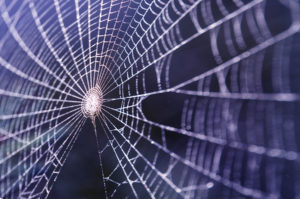 Most are picture perfect (attested to by many a photo) attracting admirers for its inspiring and intriguing construction. According to the Naked Scientist website, the spider “begins its web with a bridge thread. A spider can suspend its web in midair by releasing a very lightweight silk thread until it snags on something such as a tree…. The bridge thread then forms the core of the web. The spider is able to move out and begin to build an outer framework for the web at the same time it establishes the radial threads (think of spokes on a wagon wheel)”.
Most are picture perfect (attested to by many a photo) attracting admirers for its inspiring and intriguing construction. According to the Naked Scientist website, the spider “begins its web with a bridge thread. A spider can suspend its web in midair by releasing a very lightweight silk thread until it snags on something such as a tree…. The bridge thread then forms the core of the web. The spider is able to move out and begin to build an outer framework for the web at the same time it establishes the radial threads (think of spokes on a wagon wheel)”.
It takes an hour for an orb-weaver to craft its web. This is even more impressive when you take into consideration that this critter has poor eyesight (even though most spider species have eight eyes) and must therefore construct its web primarily by relying on touch.
Insect lovers often wonder how spiders avoid becoming entangled in their own webs. Scientists who study spiders (arachnologists to be exact) are still not entirely certain how most spiders manage to avoid being caught in their own trap, but there are a few accepted theories such as spiders can “spin different kinds of silk” and “not all of their silk is sticky.” In short, only the silk used for the delicate catching spirals are dotted with glue. The spider knows which threads to use and which to avoid. In addition to producing different kinds of silk, web-spinning spiders also have an extra set of claws on their feet which are used to provide grip as it glides along the web.
SPIDER LESSONS
But what does the orb-weaver spider have to do with working smarter in the workplace? Read on to learn more because there’s something more to be gleaned than simply understanding how a spider weaves its web.
#1 Leverage (recycle) your energy.
Just as the spider uses its energy wisely, so does today’s worker. This requires conscious thinking about other ways to make use of completed work. Some orb-weaver species actually use their web again and again. Maybe you don’t need to invent a new thingamajig for each and every endeavor. Take what you’ve done and consider ways to apply it to other efforts underway.
#2 Be smart about the projects you say “yes” to.
The orb-weaver consumes small insects but may let a larger moth or beetle escape because it knows that bug is just too big and there’s no way it can eat that thing without dying in the process. Likewise, be savvy about what you say “yes” to in emails, meetings and projects. What can you realistically “consume”? Regardless of whether or not your manager believes you should be able to eat the ginormous hippopotamus that leaps into the web, be willing to have a better conversation detailing what you think is realistic all the while backing up your rationale with key data points.
#3 Cast a work project (web) that you can effectively control.
A spider spins a web that it can manage – no more and no less. Avoid “scope creep” – doing a great deal more than was ever requested (or needed for that matter). Stay focused on the work under your umbrella of responsibility in order to craft the best output (optimum web).
#4 Spiders don’t get stuck in their work. Neither should you.
Don’t get overly committed to an idea as though this is your last best design. And don’t get bogged down in workplace politics (glue threads) that leave you exposed and vulnerable to being gobbled up as office prey. You have the skills (claws) to grab onto what and who you need when navigating the workplace and when to “let go.” Steer clear of the “sticky” situations as well as those people who tend to drag people into their workplace drama (web snare).
#5 Don’t hold on to a way of thinking that’s no longer useful to the organization or to your own wellbeing.
Cobwebs occur when a web is abandoned and the dust settles on it. You don’t see a spider hanging around its web after its’ lost all of its sticky-ness and therefore no longer useable. Just like an orb-weaver, it may be time to “get over it” and move on to the next effort.
For more information on this blog, send Victoria a note at VTucker@ZBglobal.com and don’t forget to check out our friends and colleagues at the San Diego Zoo Global BioInspiration and Tech to Reconnect Centre – they’re the experts when it comes to learning from nature and in working to conserve our planet’s endangered species.

